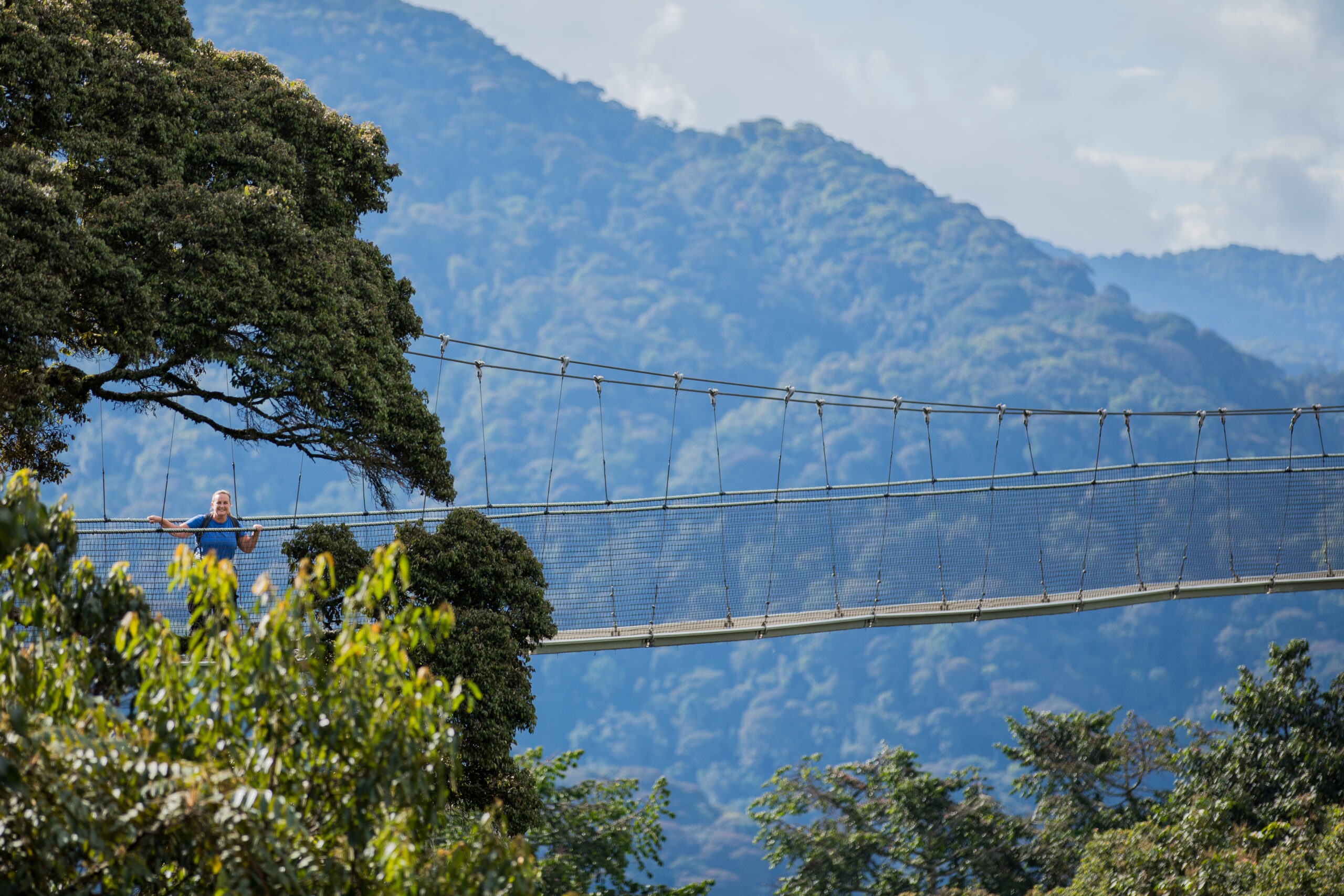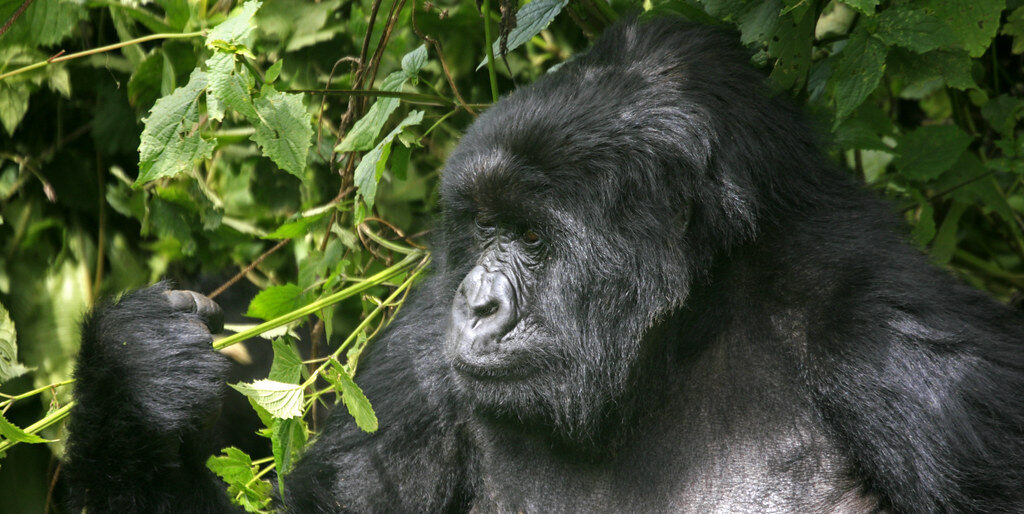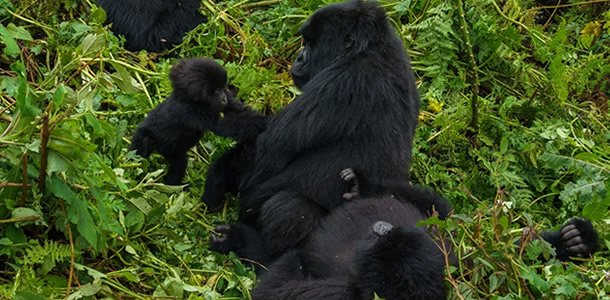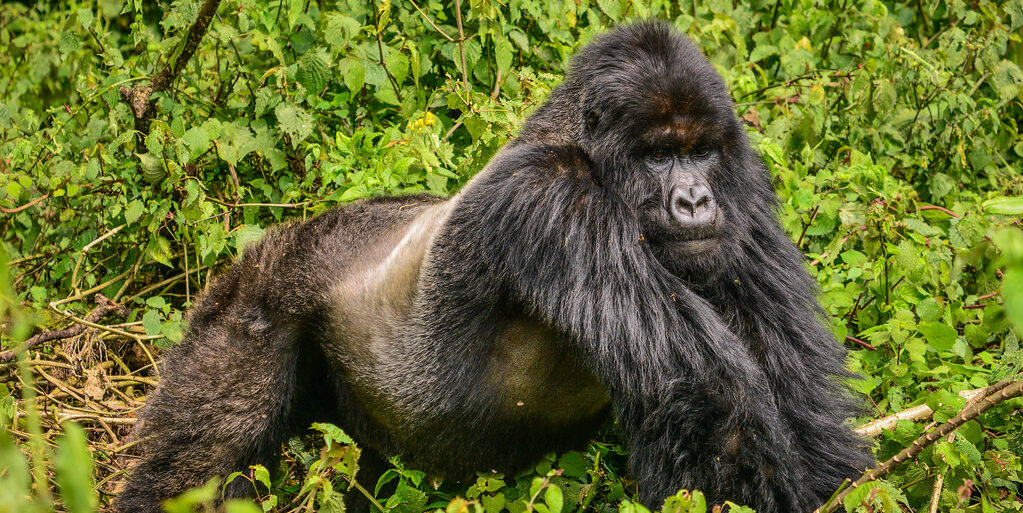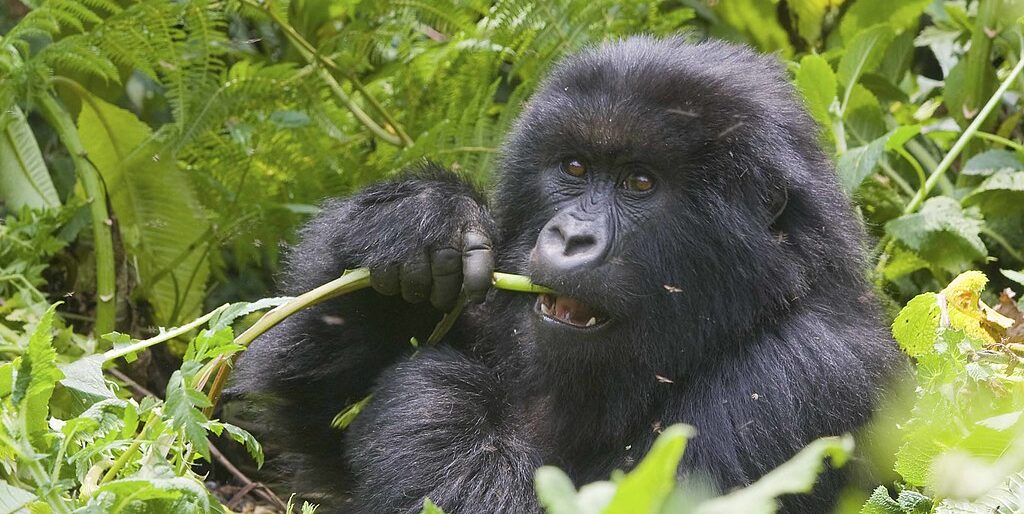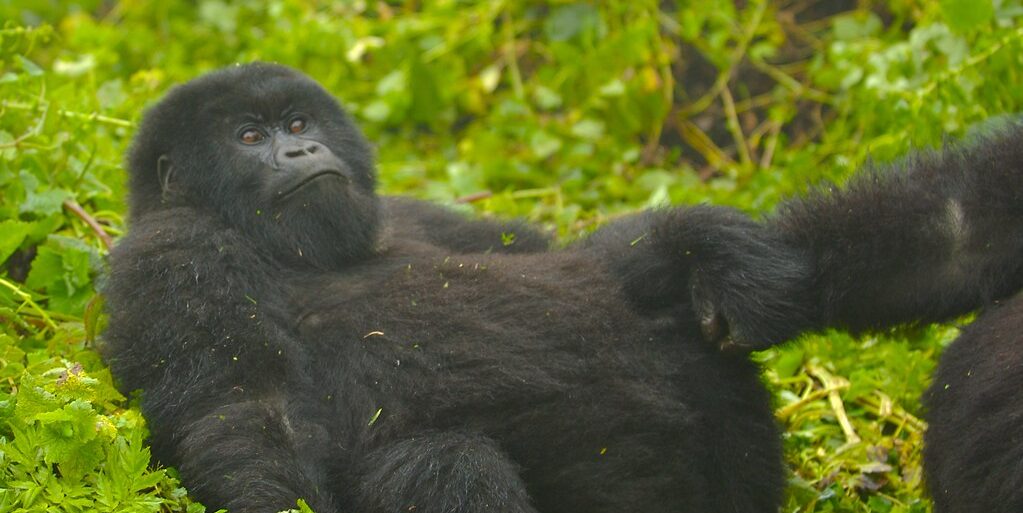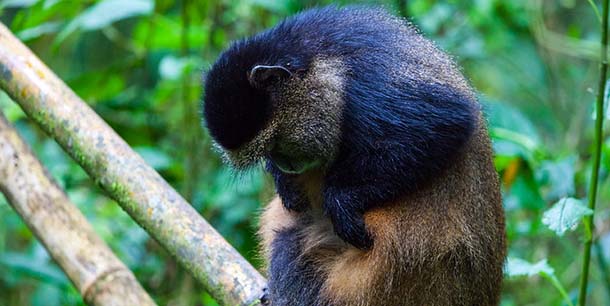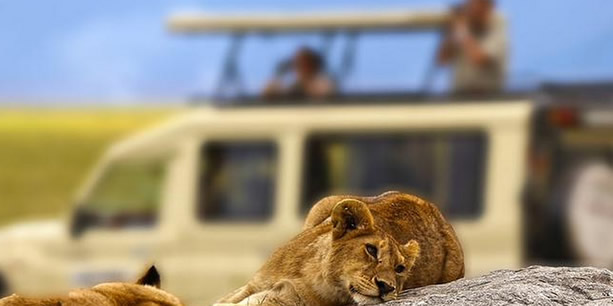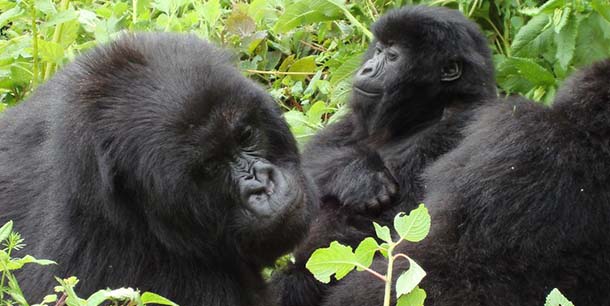Safaris in Rwanda explore the “Land of a Thousand Hills”, a breathtaking destination filled with natural beauty and rich culture. It’s home to Volcanoes National Park, where travelers can experience the unforgettable Gorilla Trekking adventure. In addition to mountain gorillas, Rwanda offers picturesque landscapes, vibrant cities like Kigali, and incredible wildlife in Akagera National Park. The country’s history, from its cultural heritage to its journey of recovery, makes Rwanda a must-visit destination for any traveler looking to experience both nature and human resilience.
Safaris and excursions in Rwanda provide unforgettable experiences that combine cultural immersion, adventure, and wildlife. Visitors to Volcanoes National Park are able to observe majestic mountain gorillas in their natural environment, which is why the nation is renowned for its gorilla trekking. In addition to gorillas, Nyungwe National Park offers primate trekking and canopy walks, while Akagera National Park provides traditional game safaris to observe the Big Five. Activities such as bird viewing, nature walks, and cultural tours are complemented by Rwanda’s breathtaking scenery, which includes tranquil lakes and rolling hills. A safari in Rwanda is both adventurous and enriching, as visitors have the opportunity to investigate vibrant local traditions through visits to community projects and cultural centers.
Best Rwanda Safari Packages
The Best places for Safari in Rwanda
Rwanda has established itself as a top African safari destination thanks to its biodiversity, commitment to conservation, and thriving national parks. While it may be one of Africa’s smaller nations, a safari in Rwanda explores an impressive variety of ecosystems, from rainforests and montane to sprawling savannahs and freshwater lakes.
Rwanda’s geography is central to its appeal to safari-goers. Bridged between Uganda, Tanzania, and the Democratic Republic of the Congo, Rwanda lies at the convergence of ecosystems, creating a hotspot where African savannah species and tropical rainforest species meet. In addition to its famous mountain gorillas, Rwanda has a growing population of the “Big Five” game animals, including lions, elephants, rhinos, leopards, and buffalo. Each park in Rwanda offers a distinct safari experience, with different terrains and wildlife, making it possible for visitors to experience a wide range of habitats and species within the country.
In recent years, Rwanda’s government has invested heavily in ecotourism and wildlife conservation, ensuring its natural resources are preserved while creating opportunities for sustainable tourism. Parks like Akagera and Volcanoes National Park have become icons of these efforts, bringing back species from the brink of extinction and creating thriving ecosystems. Thanks to these initiatives, Rwanda safaris offer travelers a chance to witness some of Africa’s most stunning species in habitats carefully protected and managed for generations.
Explained below are some of the best safari destinations in Rwanda.
Akagera National Park
Akagera National Park is Rwanda’s leading destination for a classic safari. Located along Rwanda’s eastern border with Tanzania, Akagera is the country’s largest protected wetland and the last remaining refuge for savannah wildlife in Rwanda. Covering 1,200 square kilometres, the park offers a unique combination of landscapes, rich biodiversity, and conservation success stories, making it a must-visit for nature and wildlife enthusiasts.
Overview of Akagera’s Landscape and Ecosystems
Akagera National Park is known for its varied terrain, which includes:
- Savannah Plains – Rolling grasslands where you’ll find herds of zebras, antelopes, and buffaloes grazing.
- Woodlands and Acacia Forests – Scattered forests shelter animals like giraffes and elephants.
- Lakes and Swamps – The park is home to a complex network of lakes, swamps, and rivers, forming one of the most extensive protected wetlands in Central Africa.
Each ecosystem within the park is interconnected, supporting a variety of species and offering safari-goers an immersive experience of Rwanda’s natural beauty. The picturesque Lake Ihema, in particular, is known for its serene waters and abundant wildlife, including crocodiles and hippos, often spotted along its banks.
Wildlife Highlights
Akagera National Park is Rwanda’s only safari destination where visitors can encounter the Big Five: lions, leopards, elephants, rhinos, and buffalo. Due to extensive conservation efforts, Akagera’s wildlife populations have flourished, with exciting opportunities to see:
- Lions – Reintroduced in 2015, Akagera’s lion population has thrived, and sightings have become increasingly common.
- Black Rhinos – Reintroduced in 2017, black rhinos are now a significant attraction, completing the Big Five experience.
- Elephants and Buffalo—Akagera’s woodlands and savannahs are home to a healthy population of elephants and buffalo, often seen grazing or moving in groups.
- Other Animals – Giraffes, zebras, antelopes, and primates like baboons and vervet monkeys also roam freely, adding to the diversity of wildlife encounters.
Birdwatching in Akagera National Park
Akagera National Park is a treasure trove for birdwatchers, boasting over 500 bird species, many rare or endemic to the region. Key highlights include:
- Shoebill Stork – This rare bird is a sought-after sighting for avid birdwatchers.
- African Fish Eagle – Often perched around lakes, this bird symbolises Africa’s waterways.
- Papyrus Gonolek and Swamp Flycatcher – Found around the park’s wetlands, these species thrive in Akagera’s rich swamp ecosystems.
Boat safaris on Lake Ihema provide a unique way to spot waterbirds and other aquatic life, offering close encounters with birds in their natural habitat.
Conservation Efforts and Community Involvement
The revival of Akagera is a testament to Rwanda’s commitment to wildlife conservation. In 2010, the Rwanda Development Board and African Parks jointly established a co-management agreement to restore the park’s ecosystem and promote sustainable tourism.
- Anti-Poaching Initiatives – Robust anti-poaching measures have significantly decreased illegal hunting, allowing animal populations to recover and flourish.
- Community Engagement—Tourism revenues directly benefit local communities, funding schools, healthcare, and employment initiatives and ensuring conservation efforts benefit the surrounding population.
- Ecotourism and Sustainability – By focusing on sustainable practices, Akagera has become a model for wildlife preservation, blending conservation with responsible tourism.
Safari Experiences and Visitor Options
Akagera offers an array of safari experiences tailored to different interests:
- Guided Game Drives – Professional guides lead visitors through prime viewing areas, maximizing wildlife sightings.
- Self-Drive Safari – Akagera is one of the few parks in East Africa that allows self-driving, providing a flexible option for experienced visitors.
- Night Drives – For a unique experience, night drives offer a chance to observe nocturnal animals such as leopards and bush babies.
- Boat Safaris – Cruises on Lake Ihema allow for close-up views of hippos, crocodiles, and bird species not often seen on land safaris.
Volcanoes National Park
Volcanoes National Park is one of Rwanda’s most celebrated natural treasures, renowned worldwide as a sanctuary for mountain gorillas. Covering 160 square kilometres northwest of Rwanda, it is famous for gorilla trekking and is home to golden monkeys, unique flora, and incredible volcanic landscapes. This park provides an opportunity to connect with some of the world’s most endangered species in a breathtaking natural setting.
The Landscape of Volcanoes National Park
Volcanoes National Park is named for the Virunga Mountains – a chain of dormant volcanoes that straddle the borders of Rwanda, Uganda, and the Democratic Republic of the Congo. The park’s landscape blends high-altitude forests, lush bamboo stands, and mist-shrouded peaks. Key geographic features of the park include:
- Mount Karisimbi—The tallest of the Virunga volcanoes, Karisimbi stands at 4,507 meters, and trails lead trekkers through cloud forests.
- Mount Bisoke—Known for its iconic crater lake, Mount Bisoke offers adventure seekers a scenic yet challenging climb.
- Dense Rainforests and Bamboo Zones – These forested areas are prime habitats for gorillas, golden monkeys, and other species, providing a rich ecological environment.
The landscape is a visitor highlight, offering unparalleled scenery and varied hiking experiences. As you move through different elevations, you’ll encounter changes in flora and fauna, making the journey as rewarding as the wildlife sightings.
Mountain Gorilla Trekking
Volcanoes National Park is best known for its mountain gorilla population, which draws visitors from around the globe. These gorillas, made famous by the work of conservationist Dian Fossey, live in family groups scattered throughout the park. Gorilla trekking in Volcanoes National Park is a well-regulated activity designed to minimise human impact while offering visitors an intimate experience with these incredible animals.
- Gorilla Families and Habituation—The park is home to several habituated gorilla families, which allow for safe, respectful observation in small groups.
- The Trekking Experience—Treks range from 1 to 4 hours, depending on the gorilla group’s location, and knowledgeable guides lead visitors through dense forest terrain.
- Conservation Efforts – Each gorilla permit directly contributes to conservation efforts and local communities, ensuring the protection of this critically endangered species.
Golden Monkey Trekking and Other Wildlife Highlights
Beyond gorillas, Volcanoes National Park is also home to another rare primate: the golden monkey. Known for their distinctive orange-gold coats, these playful primates inhabit the park’s bamboo forests, offering a unique trekking experience. The guided golden monkey trek provides another fascinating look at Rwanda’s diverse primate population.
- Golden Monkey Behavior – These monkeys are highly social, and visitors often observe them leaping between bamboo trees or foraging on the forest floor.
- Birdlife and Other Wildlife – While primates are the main attraction, Volcanoes National Park is also home to several bird species, such as the Ruwenzori turaco and the handsome francolin. Occasionally, visitors may also spot bushbucks or forest elephants, though these sightings are less common.
Hiking and Adventure
Volcanoes National Park offers challenging hikes for adventure seekers, with several trekking options across its volcanic terrain. Climbing these mountains is a rewarding experience that combines panoramic views, rare wildlife sightings, and a journey through multiple ecosystems.
- Mount Bisoke Crater Lake Hike—This four-hour hike to the summit rewards trekkers with a view of Bisoke’s stunning crater lake, framed by lush greenery and misty clouds.
- Mount Karisimbi Trek—As Rwanda’s highest peak, Karisimbi offers a challenging two-day trek through different vegetative zones, ending with panoramic views from the summit.
- Dian Fossey’s Grave and Research Camp – For those interested in gorilla conservation history, a hike to Dian Fossey’s research camp offers insight into her legacy and contributions to protecting mountain gorillas.
Gishwati-Mukura National Park
Gishwati-Mukura National Park, which was designated as a national park in 2015, is Rwanda’s newest addition to its protected area network. Located in the country’s northwestern part, Gishwati-Mukura covers a combined area of about 34 square kilometres, composed of the Gishwati and Mukura forests. This park stands as a testament to Rwanda’s commitment to conservation and ecological restoration, as both forests have suffered from deforestation and habitat degradation over the years. Today, the park is part of a significant reforestation and conservation effort to create a sanctuary for endangered species, including primates, birds, and plant life.
Landscape and Ecology
Though smaller than Rwanda’s other national parks, Gishwati-Mukura is known for its ecological importance. The landscape consists of:
- Montane Forests—Gishwati and Mukura are montane rainforests featuring lush vegetation, rolling hills, and dense forest cover. These habitats support primates and a variety of bird species.
- Streams and Rivers—The forests are interlaced with rivers and streams that contribute to the regional water supply, supporting wildlife and the surrounding communities.
- Scenic Hills and Valleys – The hilly terrain offers scenic views and opportunities for trekking through Rwanda’s iconic “land of a thousand hills.”
Wildlife and Biodiversity
Despite its small size, Gishwati-Mukura National Park is home to many species, many of which are endangered or endemic to the region. The park’s reforestation and habitat restoration efforts have already led to encouraging growth in wildlife populations. Key species include:
- Primates—The park is home to golden monkeys, blue monkeys, and the eastern chimpanzee, among its most celebrated inhabitants. Chimpanzee tracking has become popular, as visitors can observe these primates in their natural environment.
- Bird Species—With over 230 bird species, Gishwati-Mukura is a prime spot for birdwatching, particularly for those interested in Albertine Rift endemics. The park is home to species like the Ruwenzori turaco and the mountain yellow warbler.
- Small Mammals and Reptiles – The forest also shelters several small mammals, such as civets and reptiles, contributing to the park’s biodiversity.
The reintroduction of various species and the recovery of plant life have turned Gishwati-Mukura into a burgeoning sanctuary, gradually becoming an essential stop for visitors interested in Rwanda’s lesser-known wildlife.
Conservation and Restoration Efforts
Gishwati-Mukura National Park is a product of Rwanda’s dedication to reversing environmental degradation. Following decades of deforestation due to agriculture, livestock grazing, and human settlements, a national conservation initiative was launched to restore the forest and its ecosystems. Critical conservation efforts include:
- Reforestation Projects—Thousands of indigenous trees have been planted to restore forest cover and reestablish critical habitats for both flora and fauna.
- Community Engagement – The government has worked closely with surrounding communities to promote sustainable practices and reduce forest resource dependence. Community involvement is vital for the park’s protection, and local populations are encouraged to participate in conservation activities.
- Ecotourism Initiatives – By promoting low-impact tourism, Gishwati-Mukura aims to generate revenue that can be reinvested in park maintenance and local community projects, making conservation economically beneficial.
- chimpanzee and monkey tracking should be booked in advance, as visitor numbers are kept low to maintain an intimate, low-impact experience.
Best Time to Go on Safari in Rwanda
Understanding Rwanda’s seasonal variations is essential to planning a rewarding safari. Rwanda’s climate, shaped by its location just south of the equator, is primarily temperate due to its high altitude. This results in two main seasons: the dry season and the rainy season. Each season offers unique advantages and considerations for wildlife viewing, impacting accessibility, animal behaviour, and the overall safari experience.
Rwanda’s Climate and Seasonal Overview
Rwanda experiences a subtropical highland climate with two distinct rainy and dry seasons:
- Dry Season – The long dry season runs from June to September, with a shorter dry spell in December and January. This is the peak season for safaris, as wildlife congregates around limited water sources, making animals easier to spot.
- Rainy Season—The long rainy season lasts from March to May, with a shorter period in October and November. The landscape becomes lush and green during these months, creating stunning photographic opportunities. However, due to dense vegetation and reduced animal movement, wildlife can be harder to track.
Best Times for Gorilla Trekking in Volcanoes National Park
One of Rwanda’s premier wildlife experiences, gorilla trekking, is influenced by seasonal factors. Gorilla trekking is available year-round, but the dry season (June to September and December to January) is ideal for this activity due to more manageable trail conditions. Highlights of each season include:
- Dry Season (June to September, December to January) – Trails are more accessible to navigate with reduced mud and obstacles. This is a popular time for gorilla trekking, so securing permits in advance is essential. Cooler, drier conditions make hikes more comfortable, and gorillas tend to remain in lower forest elevations, reducing trekking time.
- Rainy Season (March to May, October to November) – Although trekking is more challenging due to muddy trails, the rainy season offers lush vegetation, enhancing the overall scenery and photography opportunities. Gorilla families may stay closer to the park’s boundaries, and fewer tourists mean a quieter, more exclusive experience.
Wildlife Viewing in Akagera National Park: The Dry Season Advantage
Akagera National Park is best visited during the dry season (June to September), as wildlife gathers around water sources, making it easier to spot animals. Highlights of each season include:
- Dry Season (June to September)—With sparse water sources, animals gather around lakes and rivers, increasing the chances of seeing lions, elephants, and hippos up close. Vegetation is also thinner, enhancing visibility across the plains, while the pleasant weather makes for comfortable game drives.
- Rainy Season (March to May, October to November) – The rainy season brings lush greenery and fewer visitors, offering a more secluded experience. While some roads may become inaccessible due to flooding, birdwatchers will find this season highly rewarding as migratory bird species arrive, increasing the diversity of avian sightings.
Conclusion: Rwanda Awaits
Every aspect of Rwanda’s safari experience is designed with conservation in mind, ensuring the environment and local communities benefit from sustainable tourism. By visiting Rwanda’s parks, travellers contribute directly to wildlife preservation efforts and the economic empowerment of surrounding communities, allowing for a positive impact that extends well beyond the safari itself.
Rwanda’s compact size allows visitors to experience multiple parks within a single trip, creating a seamless journey through various ecosystems and landscapes. Rwanda also offers countless ways to connect with its natural and cultural heritage.
With careful planning, respect for conservation, and an open mind to the wonders of Africa, travelers can embark on an unforgettable journey through one of the world’s most inspiring safari destinations. Rwanda awaits.

